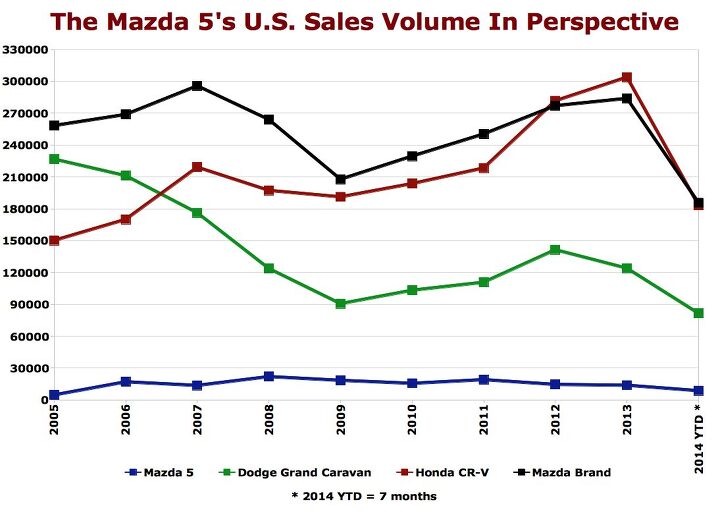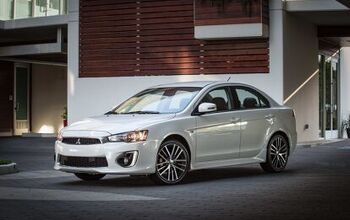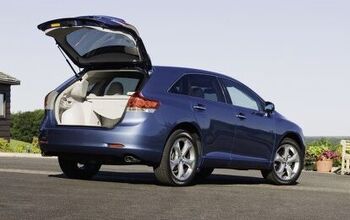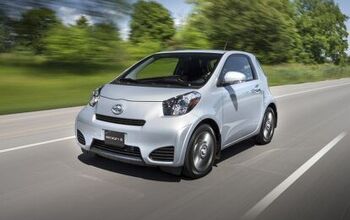The Mazda 5 Is Dead: Here's Why
There are two ways of understanding why it was Mazda USA decided to extinguish the Mazda 5 from their lineup beginning with the 2015 model year. First, we could look at the root causes. Then we could check out the symptoms.
The root causes are numerous, but it’s worth keeping in mind that for thousands of buyers, the reasons many would point to as cause for ignoring the 5 been overmatched by reasons to purchase a 5.
Compared with conventional minivans, it’s obviously small, but that’s exactly why many people have turned to the Mazda: it’s not a maxi-van. Fortunately, it doesn’t drive like one either, and it’s even available with a manual transmission. Yet it is far closer to being underpowered than it is to being overpowered. Compared with discounted Grand Caravans, it’s not necessarily more affordable for a growing family who simply needs more seating capacity. Speaking of which, it only seats six in North America, not seven or eight.
From the beginning of its tenure, the reasons many buyers would have for veering away from the Mazda 5 have combined to create sales figures which suggested the 5 wouldn’t remain in America for long. As Derek mentioned on Monday, only 22,021 were sold in the 5’s best year, 2008. Its share in the minivan market that year? 3.4%.
Kia sold 28,645 Rondos in 2008, and the Rondo was basically gone from the U.S. market in 2010, with 47 lingering sales to collect in calendar year 2011.
Mazda’s share of the minivan market rose to 4.1% in 2009 as the segment plunged 30% and 5 sales dropped by just 16%. In 2010, 5 volume slid 15% year-over-year as the top four big vans (Town & Country, Odyssey, Grand Caravan, and Sienna) surged forward at a combined 17% clip.
Mazda’s share of the category slid to 3.3%. 2011 saw Mazda 5 sales jump 22% to 19,155 units, its second-best year on record. The 5’s slice of the minivan pie climbed to 3.9%.
5 sales then plunged 24% to just 14,640 units in 2012, as Mazda claimed just 2.6% of the segment. Last year, a 5% decrease in 5 sales (and a 4% decrease in total minivan sales) meant 5 sales slid to 13,884 units, but its market share basically stayed level.
Through the first seven months of 2014, Mazda 5 sales are down 13% to 8762 units, and it has once again claimed 2.6% of the minivan segment.
Volume-wise, the 5 has not been a hugely important piece of the Mazda puzzle in the United States, accounting for slightly less than one out of every 20 Mazda sales. Mazda USA has sold nearly seven CX-5s for every 5 sold during the last seven months. The 5 generated 8.3% of Mazda’s volume in 2008.
The MPV, on the other hand, averaged nearly 30,000 sales even toward the end of its reign between 2002 and 2004. Another 17,634 were sold in 2005 and 11,600 in 2006, years in which Mazda sold 4761 and 17,109 5s, respectively. 13.3% of the Mazdas sold in America in 2002 were MPVs.
The 5 clearly wasn’t a direct replacement for the already-small MPV when it landed in the United States nine years ago. It has grown old during a period in which many expected Americans would be turned off by larger gas guzzlers and the anticipation of high fuel prices. By and large, however, fuel prices have not intimidated new car buyers, and buyers have turned to increasingly efficient crossovers in large numbers.
Moreover, the 5 is now a sliding-doors front-wheel-driver with EPA ratings of 22 mpg city and 28 mpg highway. That’s a problem, as it’s competing with utility vehicles like the all-wheel-drive Nissan Rogue (rated at 25/32) and Mazda’s own all-wheel-drive CX-5, which is rated at 24/30 in its least efficient format.
Had the 5 panned out, a feat which would have required more significant design updates and improved efficiency, we would now be praising Mazda for thinking outside the box. Instead, Mazda didn’t hit the nail on the head, something we could say about the brand overall, too, at least when it comes to their sales performance in the United States.
More by Timothy Cain
Latest Car Reviews
Read moreLatest Product Reviews
Read moreRecent Comments
- TheEndlessEnigma Of course they should unionize. US based automotive production component production and auto assembly plants with unionized memberships produce the highest quality products in the automotive sector. Just look at the high quality products produced by GM, Ford and Chrysler!
- Redapple2 Got cha. No big.
- Theflyersfan The wheel and tire combo is tragic and the "M Stripe" has to go, but overall, this one is a keeper. Provided the mileage isn't 300,000 and the service records don't read like a horror novel, this could be one of the last (almost) unmodified E34s out there that isn't rotting in a barn. I can see this ad being taken down quickly due to someone taking the chance. Recently had some good finds here. Which means Monday, we'll see a 1999 Honda Civic with falling off body mods from Pep Boys, a rusted fart can, Honda Rot with bad paint, 400,000 miles, and a biohazard interior, all for the unrealistic price of $10,000.
- Theflyersfan Expect a press report about an expansion of VW's Mexican plant any day now. I'm all for worker's rights to get the best (and fair) wages and benefits possible, but didn't VW, and for that matter many of the Asian and European carmaker plants in the south, already have as good of, if not better wages already? This can drive a wedge in those plants and this might be a case of be careful what you wish for.
- Jkross22 When I think about products that I buy that are of the highest quality or are of great value, I have no idea if they are made as a whole or in parts by unionized employees. As a customer, that's really all I care about. When I think about services I receive from unionized and non-unionized employees, it varies from C- to F levels of service. Will unionizing make the cars better or worse?



































Comments
Join the conversation
I've been looking at used minivans to replace our totaled Routan. With only two children, the Mazda5 would be a reasonable option. The problems? Wife wants a hard drive in the radio to store music for the kids. She misses the DVD entertainment system of the Routan. Our youngest is still a little small to be opening and closing the sliding door by herself. She likes the storage space in the central console, and the two glove boxes in the Routan. Sure, some of those can be fixed with aftermarket items, but a dealer in our state is selling Grand Caravans SE (not the AVP model) for less than $19,000 right now. It would still have more equipment than a similarly priced 5, which still feels like a down market step from a Town&Country/Routan. Too many compromises for not enough increase in fuel economy. I still like the vehicle, so who knows.
This makes me sad... so very sad. Yeah, in EPA tests, a manual 5 doesn't look that great compared to some crossovers. But I bet the real world fuel economy is as good or better than the EPA numbers. On the fueleconomy.gov site, the real-world fuel economy people get with the manual model is 26-27mpg... and 24-27mpg with the automatic. How does that compare with the AWD Nissan Rogue? In the real world, Rogue drivers are getting 20-24mpg. And those Chrysler van? They get 17-22mpg in the real world. If you care about fuel costs, you're better off with the Mazda in the long run. The Mazda 5 was a good, honest vehicle that does what it was designed to do well without overstating its credentials. It's sad to see an honest vehicle like this die.